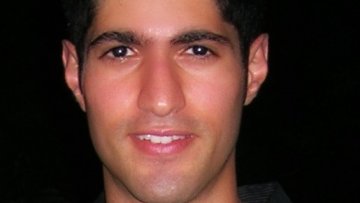Period rings
Abstract
This talk will give a description of the period ring B_dR of Fontaine, which uses de Rham algebra computations.
This talk is part of the workshop on Beilinson's approach to p-adic Hodge theory.
The de Rham algebra of a point in affine space
Abstract
Following the notes and an article of B. Bhatt, we shall compute the de Rham algebra of the immersion of the zero-section of affine space over Z/p^nZ.
This talk is part of the workshop on Beilinson's approach to p-adic Hodge theory.
The de Rham algebra
Abstract
This talk will describe the basic properties of the de Rham algebra, which is a generalisation of the de Rham algebra over smooth schemes, which was introduced by L. Illusie in his monograph 'Complexe cotangent et déformations'.
Congratulations to Oxford Mathematics' Zubin Siganporia who has won the award for Outstanding Tutor for the Mathematical, Physical and Life Sciences Division in the 2016 Oxford University Student Union Student Led Teaching Awards.
The work of Oxford University Professor Sir Andrew Wiles was celebrated as having 'heralded a new era in number theory' as he received the top international prize for mathematics.
Sir Andrew received the 2016 Abel Prize from Crown Prince Hakon of Norway at the prize ceremony in Oslo on 24 May. He was awarded the prize 'for his stunning proof of Fermat's Last Theorem by way of the modularity conjecture for semistable elliptic curves, opening a new era in number theory'.
Crystal, PBW, and canonical bases for quantized enveloping algebras
Abstract
Let U be the quantized enveloping algebra coming from a semi-simple finite dimensional complex Lie algebra. Lusztig has defined a canonical basis B for the minus part of U- of U. It has the remarkable property that one gets a basis of each highest-weight irreducible U-module V, with highest weight vector v, as the set of all bv which are not 0, as b varies in B. It is not known how to give the elements b explicitly, although there are algorithms.
For each reduced expression of the longest word in the Weyl group, Lusztig has defined a PBW basis P of U-, and for each b in B there is a unique p(b) in P such that b = p(b) + a linear combination of p' in P where the coefficients are in qZ[q]. This is much easier in the simply laced case. I show that the set of p(b)v, where b varies in B and bv is not 0, is a basis of V, and I can explicitly exhibit this basis in type A, and to some extent in types B, C, D.
It is known that B and P are crystal bases in the sense of Kashiwara. I will define Kashiwara operators, and briefly describe Kashiwara's approach to canonical bases, which he calls global bases. I show how one can calculate the Kashiwara operators acting on P, in types A, B, C, D, using tableaux of Kashiwara-Nakashima.
Simplicial Boundary of CAT(0) Cube Complexes
Abstract
The simplicial boundary is another way to study the boundary of CAT(0) cube complexes. I will define this boundary introducing the relevant terminology from CAT(0) cube complexes along the way. There will be many examples and many pictures, hopefully to help understanding but also to improve my (not so great) drawing skills.



